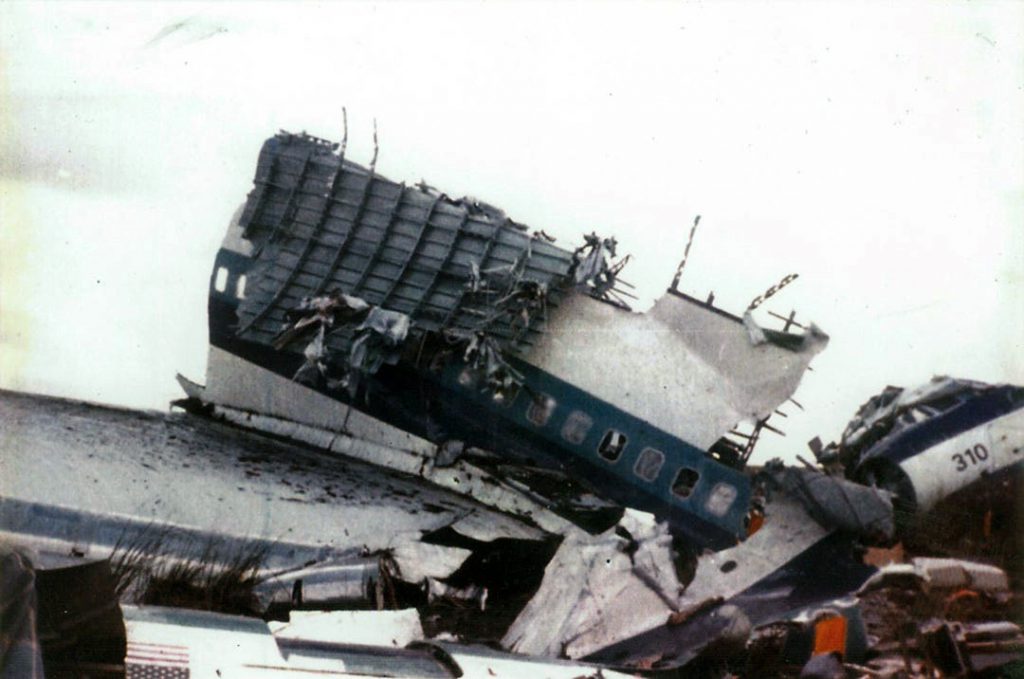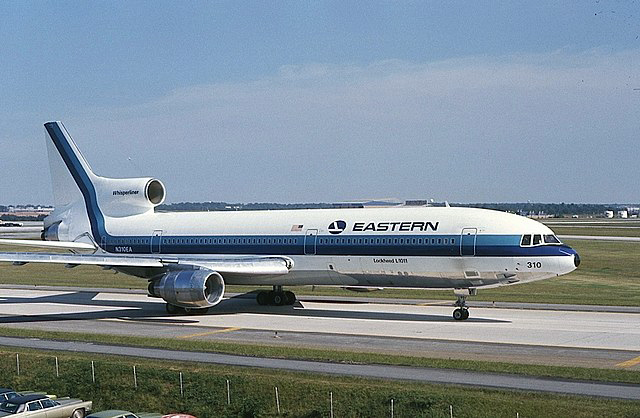Eastern Airlines flight EAL410 was operated with a Lockheed L-1011 (registration marks N310EA) and a scheduled passenger flight from the John F. Kennedy International Airport (JFK), Jamaica, New York, to the Miami International Airport (MIA), Miami, Florida.
On December 29, 1972, the flight departed from JFK at 2120
163 passengers and 13 crew members on board and was cleared to MIA in accordance with an instrument flight rules flight plan.
The flight was uneventful until the approach to MIA.
The landing gear handle of Eastern Airlines flight EAL410 was placed in the “down” position during the preparation for landing, and the green light, which would have indicated to the flight-crew that the nose landing gear was fully extended and locked, failed to illuminate.
The captain recycled the landing gear, but the green light still failed to illuminate.
At 2334:05, Eastern Airlines flight EAL410 called the MIA tower and stated, “Ah, tower this is Eastern, ah, four zero one, it looks like we’re gonna have to circle, we do.’t have a light on our nose gear yet. ”
At 2334:14, the tower advised, “Eastern four oh one heavy, roger. Pull up, climb straight ahead to two thousand, go back to approach control, one twenty eight six. ”
At 2334:21, the flight acknowledged, “Okay, going up to two thousand, one twenty eight six. ”
At 2335:09, EAL 401 contacted MIA approach control and reported, “All right, ah, approach control, Eastern four zero one, we’re right over the airport here and climbing to two thousand feet, in fact, we’ve just reached two thousand feet and we’ve got to get a green light on our nose gear.”
At 2335:20, approach control acknowledged the flight’o transmission and Instructed EAL 401 to maintain 2, 000 feet mean sea level and turn to a heading of 360° magnetic. The new heading was acknowledged by EAL 401 at 2335:28.
At 2336:04, the captain instructed the first officer, who was flying the aircraft, to engage the autopilot. The first officer acknowledged the Instruction.
At 2336:27, MIA approach control requested, “Eastern four oh one, turn left heading three zero zero.” EAL 401 acknowledged the request and complied.
The first officer successfully removed the nose gear light lens assembly, but it jammed when he attempted to replace it.

EASTERN AIRLINES flight EAL401
At 2337:08, the captain instructed the second officer to enter the forward electronics bay, below the flight deck, to check visually the alignment of the nose gear indices.
At 2537:24, a downward vertical acceleration transient of 0. 04 g caused the aircraft to descend 100 feet; the loss in altitude was arrested by a pitch-up input.
At 2337:48, approach control requested Eastern Airlines flight EAL410 to turn left to a heading of 270° magnetic. EAL 401 acknowledged the request and turned to the new heading!.
Meanwhile, the flight crew continued their attempts to free the nose gear position light lens from its retainer, without success.
At 2338:34, the captain again directed the second officer to descend into the forward electronics bay and check the alignment of the nose gear indices.
At 2338:46, EAl. 401 called MIA approach control and said, “Eastern four oh one’ll go ah, out west just a little further if we can here and, ah, see if we can get this light to come on here. ” MIA approach control granted the request.
From 2338:56 until 2341:05, the captain and the first officer discussed the faulty nose gear position light lens assembly and how it might have been reinserted incorrectly.
At 2340:38, a half-second C-chord, which indicated a deviation of +250 feet from the selected altitude, sounded in the cockpit.
No crew member commented on the C-chord. No pitch change to correct for the loss of altitude was recorded.
Shortly after 2341, the second officer raised his head into the cockpit and stated, “I can’t see it, it’s pitch dark and I throw the little light, I get, ah, nothing. ”
The flight crew and an Eastern Airlines maintenance specialist who was occupying the forward observer seat then discussed the operation of the nose wheelwell light. Afterward, the specialist went into the electronics bay to assist the second officer.
At 2341:40, MIA approach control asked, “Eastern, ah, four ‘o’ one how are things comin’ along out there?”
This query was made a few seconds after the MIA controller noted an altitude reading of 900 feet in the EAL401 alphanumeric data block on his radar display.
The controller testified that he contacted EAL 401 because the flight was nearing the airspace boundary within his jurisdiction.
He further stated that he had no doubt at that moment about the safety of the aircraft. Momentary deviations in altitude information on the radar display, he said, are not uncommon; and more than one scan on the display would be required to verify a deviation requiring controller action.
At 2341:44, EAL 401 replied to the controller’s query with, “Okay, we’d like to turn around and come, come back in, ” and at 2341:47, approach control granted the request with, “Eastern four ‘o’ one turn left heading one eight zero.” EAL 401 acknowledged and started the turn.
At 2342:05, the first officer said, “We did something to the altitude.” The captain’s reply was, “What?”
At 2312:07, the first officer asked, “We’re still at two thousand, right?” and the captain immediately exclaimed, “Hey, what’s happening here?”
At 2342:10, the first of six radio altimeter warning “beep” sounds began; they ceased immediately before the sound of the initial ground impact.
At 2342:12, while the aircraft was in a left bank of 28°, it crashed into the Everglades at a point 18.7 statute miles west-northwest of MIA (latitude 25°52′ N., longitude 80°36′ W.). The aircraft was destroyed by the Impact.
The National Transportation Safety Board determines that the probable cause of this accident was the failure of the flight crew to monitor the flight Instruments during the final 4 minutes of flight, and to detect an unexpected descent soon enough to prevent impact with the ground. Preoccupation with a malfunction of the nose landing gear position indicating system distracted the crew’s attention from the instruments and allowed the descent to go unnoticed.
Download Report


I would like to see the news films we watched in 1972 as people were rescued in the Everglades and most brought to safety.